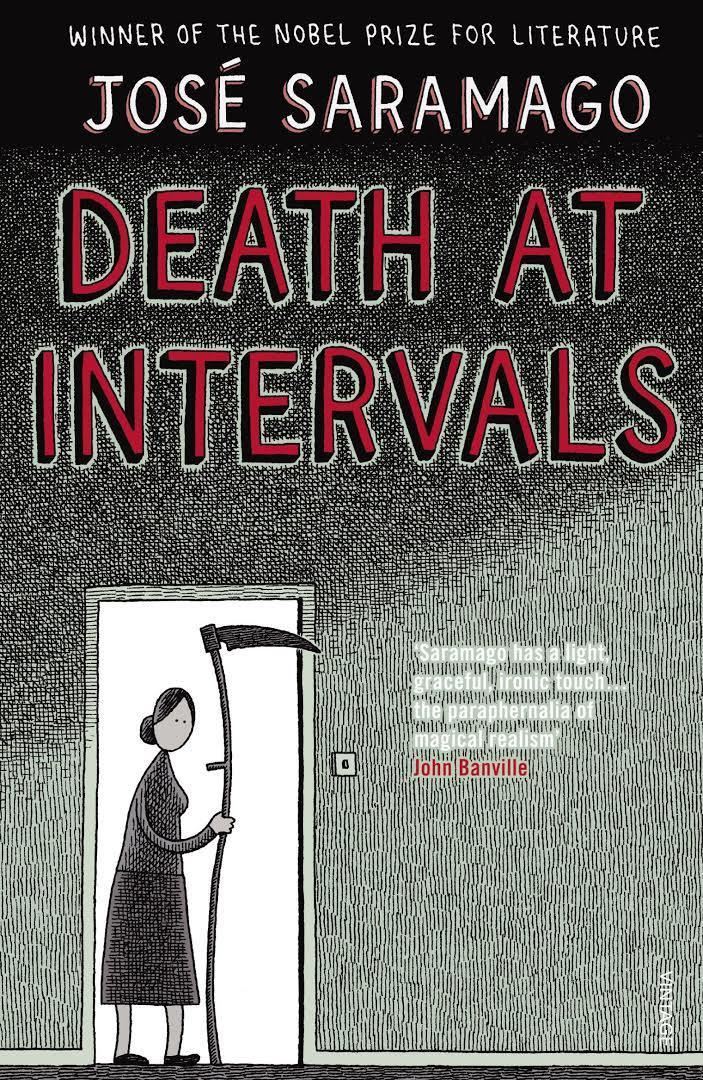8 /10 1 Votes8
Published in English 2008 Originally published 2005 Genre Speculative fiction | 4/5 Goodreads Publication date 2005 ISBN 0-15-101274-1 Country Portugal | |||||||||||||||||||||||||||||||||
 | ||||||||||||||||||||||||||||||||||
Original title As Intermitências da Morte Pages Hardcover 256pp, Paperback 238pp Similar Works by José Saramago, Speculative fiction books | ||||||||||||||||||||||||||||||||||
Jos saramago death with interruptions full audiobook
Death with Interruptions, published in Britain as Death at Intervals (Portuguese: As Intermitências da Morte), is a novel written by José Saramago. First released in 2005 in its original Portuguese, the novel was translated into English by Margaret Jull Costa in 2008.
Contents
- Jos saramago death with interruptions full audiobook
- Death with interruptions
- Plot summary
- Style
- References
The novel centers around death as both a phenomenon, and as an anthropomorphized character. A key focus of the book is how society relates to death in both of these forms, and likewise, how death relates to the people she is meant to kill.
Death with interruptions
Plot summary
The book, based in an unnamed, landlocked country at a point in the unspecified past, opens with the end of death. Mysteriously, at the stroke of midnight of January 1, no one in the country can die any more. Initially, the people of this country celebrate their apparent victory over mankind's longtime foe. Though the traditional sources for guidance on things like life and death endeavor to discover why people have stopped dying, religious authorities, philosophers and scholars alike can find no answers. The Catholic Church feels threatened by this new turn of events, as the end of death would call into question one of the fundamental foundations of their dogma: the death and resurrection of Jesus Christ. The common citizens, however, generally enjoy their newfound immortality.
This joy is short-lived - it soon becomes apparent that the end of death presents unique demographic and financial challenges. The complete cessation of dying leads to a growing fear among healthcare workers that the system will collapse under its own weight: generations of incapacitated, but still living, people will populate care homes and hospitals for, presumably, all eternity. Funeral workers, on the other hand, fear the opposite problem: they will have no business, and will be forced to move to preparing animals for the afterlife.
A means of finally killing people, and relieving families of the burden of their catatonic kin, is devised and implemented by an underground group known only as the maphia (the 'ph' is chosen to avoid any confusion with the more sinister Mafia). The incapacitated are brought over the borders of the country, where they instantly die, as death has not ceased working elsewhere. The industry develops so quickly that the government itself becomes beholden to the maphioso, even bringing it to the brink of war with its neighbors.
Death reemerges not long thereafter, this time as a woman named death (the lowercase name is used to signify the difference between the death who ends the life of people, and the Death who will end all of the Universe). She announces, through a missive sent to the media, that her experiment has ended, and people will begin dying again. However, in an effort to kill more kindly, death will now send a letter to those about to perish, giving them a week to prepare for their end. The violet-envelope-encased letters create a frenzy in the country, as people are not just returned to dying, but also must face the specter of receiving one of these letters and having their fate sealed with it.
From here, the story largely moves on to focus on death's relationship with an otherwise unremarkable cellist who, amazingly, will not die. Every time death sends him his letter, it returns. Death discovers that, without reason, this man has mistakenly not been killed. Although originally intending merely to analyze this man and discover why he is unique, death eventually becomes infatuated with him, enough so that she takes on human form to meet him. Upon visiting him, she plans to personally give him the letter; instead, she falls in love with him, and, by doing so, she becomes even more human-like. The book ends, as it began, by stating that no one died the next day.
Style
As in many of his other works, Saramago largely eschews traditional forms of grammar and punctuation. Many of his sentences are written in a style almost akin to stream of consciousness. Saramago avoids using quotations to signify speech, instead relying on inline text, and the usage of capitalization to signify the start of a new speaker's words. He avoids the capitalization of proper names of people or places, and especially of his protagonist "death" who emphatically insists that her name be written lowercase.
